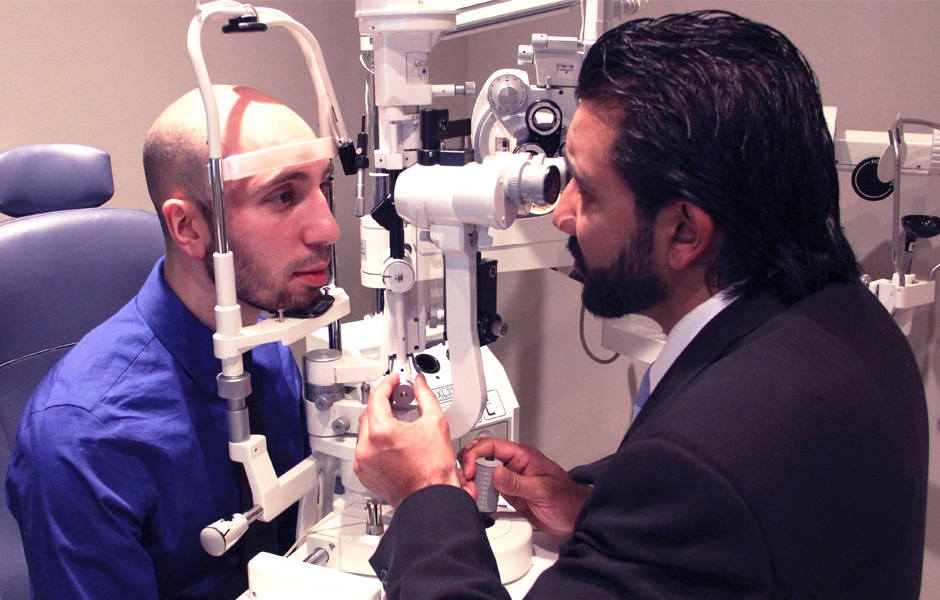Recognizing the Different Vision Correction Procedures Available for Clearer View
In the world of vision adjustment treatments, a plethora of alternatives exist to address refractive mistakes and supply individuals with more clear view. Let's discover the complexities of these treatments and dropped light on the path to attaining improved vision clearness (Neurologist Andalusia).
LASIK Surgical Procedure
LASIK surgery is a common refractive treatment used to fix vision issues such as farsightedness, nearsightedness, and astigmatism. This surgical method, which stands for Laser-Assisted in Situ Keratomileusis, aims to reshape the cornea to improve exactly how light is focused on the retina, ultimately enhancing vision clarity.
One of the key advantages of LASIK surgical treatment is the fast renovation in vision experienced by individuals. In general, LASIK surgery is a prominent choice for individuals looking for a long-term remedy for their vision problems.
PRK Treatment

PRK is an ideal alternative for people with thin corneas or those at a higher risk of eye injuries, as it does not include producing a corneal flap. The recuperation procedure for PRK is a little longer contrasted to LASIK, as the epithelium requires time to restore. Patients may experience discomfort and blurry vision for a few days complying with the procedure.
In spite of the longer healing time, PRK can produce exceptional cause vision renovation, making it a valuable alternative for those who may not appropriate candidates for LASIK surgery. - Andalusia Pediatrics
Implantable Lenses
Unlike PRK where the cornea is reshaped directly, implantable lenses offer another method for correcting vision by inserting artificial lenses inside the eye. This procedure is particularly beneficial for people with high levels of astigmatism, farsightedness, or nearsightedness that might not be ideal prospects for laser surgical procedures like LASIK or PRK.
Implantable lenses, additionally called phakic intraocular lenses, work by supplementing the eye's natural lens with an artificial one. These lenses can be positioned in front of the natural lens (former chamber) or behind the iris and before the natural lens (posterior chamber) By readjusting the power and positioning of these lenses, eye doctors can successfully fix refractive errors and boost aesthetic skill.
One advantage of implantable lenses is that they are exchangeable and detachable, giving flexibility for future changes. As with any kind of surgical treatment, there are risks entailed, such as infection or cataract formation. People thinking about implantable lenses should seek advice from with an eye care professional to determine one of the most suitable choice based upon their private demands and eye health and wellness.
Corneal Rings

The procedure for placing corneal rings is reasonably fast and minimally intrusive, often carried out as an outpatient procedure. During the surgical treatment, the ophthalmologist makes a little cut in the cornea and inserts the rings at a certain depth. When in location, the rings assist to improve the cornea, supplying a smoother surface for light to go into the eye, which can lead to clearer vision.
Corneal rings are thought about a reversible procedure, as they can be removed or replaced if required. While they may not completely eliminate the need for glasses or contact lenses, corneal rings can substantially enhance vision top quality and general visual comfort for individuals with keratoconus or other corneal irregularities.
Refractive Lens Exchange
Complying with the modification of corneal abnormalities with procedures like corneal rings, another vision correction method that can attend to refractive errors is Refractive Lens Exchange (RLE) RLE is a procedure that involves changing the eye's all-natural lens with a fabricated intraocular lens (IOL) to remedy refractive errors such as presbyopia, nearsightedness, and farsightedness. This procedure is particularly valuable for people who might not be appropriate candidates for treatments like LASIK my sources or PRK due to variables such as thin corneas or high refractive mistakes.
RLE is comparable to cataract surgical treatment, as both involve getting rid of the eye's natural lens; nonetheless, in RLE, the lens is clear, not gloomy as in cataracts. The artificial hop over to these guys lens dental implanted throughout RLE can be personalized to resolve the individual's details refractive error, giving clear vision at different ranges. Healing time for RLE is reasonably quick, and individuals can anticipate enhanced vision quickly after the procedure. Just like any kind of operation, possible dangers and difficulties exist, so a detailed assessment with an eye treatment professional is necessary to determine if RLE is the ideal vision correction option.
Final Thought

In the world of vision improvement procedures, a multitude of alternatives exist to attend to refractive errors and provide people with clearer view.LASIK surgical treatment is a common refractive treatment utilized to deal with vision issues such as nearsightedness, astigmatism, and farsightedness.While also a typical refractive procedure, the PRK (Photorefractive Keratectomy) method differs from LASIK surgical procedure in its method to correcting vision issues.Following the improvement of corneal irregularities with treatments like corneal rings, Click This Link one more vision correction method that can address refractive errors is Refractive Lens Exchange (RLE) LASIK surgical procedure, PRK procedure, implantable lenses, corneal rings, and refractive lens exchange are all alternatives that can deal with various vision problems.